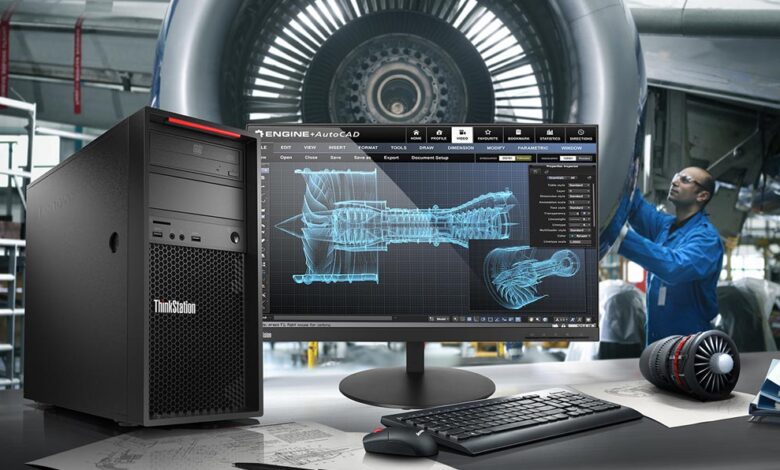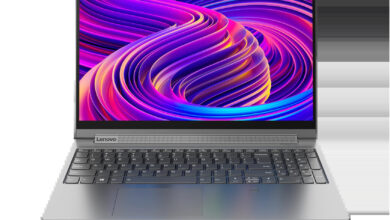9 Top Features to Consider in a Desktop for Video Editing
In video editing, having the right tools can make all the difference between a mediocre result and a professional masterpiece.

In video editing, having the right tools can make all the difference between a mediocre result and a professional masterpiece. While software and skill play significant roles, the hardware you use is equally crucial, particularly regarding desktop computers.
Whether you’re a seasoned video editor or a budding content creator, selecting the right desktop for video editing can significantly impact your workflow and productivity. In this comprehensive guide, we’ll explore nine top features to consider when choosing a desktop for video editing, ensuring that you invest in a system that meets your needs and unleashes your creative potential.
-
Powerful Processor:
At the heart of any video editing desktop lies the processor, which drives your editing tasks. When selecting a desktop for video editing, prioritize a powerful processor with multiple cores and high clock speeds. Due to their robust performance and multitasking capabilities, processors from Intel’s Core i7 or i9 series and AMD’s Ryzen 7 or Ryzen 9 series are popular among video editors. A powerful processor ensures smooth playback, fast rendering times, and seamless multitasking, enabling you to work efficiently and tackle complex editing projects easily.
-
Ample RAM:
Video editing is a memory-intensive task that requires significant amounts of RAM to handle large files and multiple editing layers effectively. When choosing a desktop for video editing, opt for a system with ample RAM, ideally 16GB or more. This ensures that your editing software can access the necessary resources to keep multiple clips, effects, and transitions loaded in memory simultaneously, reducing the risk of slowdowns or crashes. Additionally, consider the upgradeability of the desktop’s RAM to accommodate future expansion as your editing needs evolve.
-
High-Performance Graphics Card:
A high-performance graphics card accelerates video rendering, enhances visual effects, and supports high-resolution playback during video editing. Look for a desktop with a dedicated GPU (Graphics Processing Unit) from NVIDIA or AMD, ideally from their professional or gaming-oriented product lines. These GPUs offer hardware acceleration for popular editing software such as Adobe Premiere Pro, DaVinci Resolve, and Final Cut Pro, enabling faster rendering times and smoother playback of high-resolution footage. Additionally, consider the amount of VRAM (Video RAM) available on the graphics card, as this can impact the performance of GPU-intensive tasks such as color grading and compositing.
-
Fast Storage:
Storage speed is crucial for video editing, as it directly affects the loading times of media files, project assets, and video previews. When selecting a desktop for video editing, prioritize systems with fast storage options such as SSDs (Solid State Drives) or NVMe SSDs. These storage technologies offer significantly faster read and write speeds compared to traditional HDDs (Hard Disk Drives), resulting in quicker project load times, smoother scrubbing through timelines, and faster exporting of edited videos. Consider a desktop with a combination of SSD for the operating system and applications and a larger HDD or external storage for storing project files and media libraries.
-
High-Resolution Display:
A high-resolution display is essential for accurately assessing the quality and details of your video edits. When choosing a desktop for video editing, opt for a monitor with a high-resolution panel, ideally 4K or higher. This ensures you can view your footage in crisp detail and accurately evaluate color, contrast, and sharpness during editing. Additionally, consider features such as color accuracy, brightness, and viewing angles, as these factors can impact the quality of your editing work. A colour-calibrated monitor supporting wide colour gamuts such as Adobe RGB or DCI-P3 is ideal for achieving accurate colour grading and ensuring your videos look their best across various devices and platforms.
-
Expandability and Upgradeability:
Video editing workflows often evolve, requiring additional storage, RAM, or processing power to accommodate larger projects and more demanding editing tasks. When selecting a desktop for video editing, consider the system’s expandability and upgradeability to ensure it can grow with your needs. Look for desktops with easily accessible internals, ample expansion slots, and support for aftermarket upgrades such as additional RAM, storage drives, or graphics cards. This flexibility allows you to future-proof your editing setup and adapt to changing requirements without requiring a complete system overhaul.
-
Efficient Cooling System:
Video editing tasks can significantly strain the CPU and GPU, generating heat that needs to be dissipated to maintain optimal performance and reliability. When choosing a desktop for video editing, prioritize systems with efficient cooling solutions, such as liquid or advanced air cooling systems. These cooling solutions help dissipate heat more effectively, keeping temperatures in check and preventing thermal throttling that can degrade performance during prolonged editing sessions. Additionally, consider the noise levels generated by the cooling system, as a quiet workspace is essential for focusing on editing tasks without distractions.
-
Connectivity Options:
A desktop computer for video editing should offer a wide range of connectivity options to accommodate various peripherals, external storage devices, and audiovisual equipment. Look for desktops with multiple USB ports, including USB 3.0 or USB-C, for high-speed data transfer and device charging. Additionally, consider the availability of Thunderbolt ports, HDMI or DisplayPort outputs, and audio jacks for connecting external displays, monitors, speakers, and other accessories. Built-in networking features such as Gigabit Ethernet and Wi-Fi connectivity are essential for accessing online resources, sharing files, and collaborating with colleagues or clients.
-
Reliable Power Supply:
Last but not least, a reliable power supply is crucial for ensuring the stability and longevity of your video editing desktop. When selecting a desktop for video editing, opt for systems with high-quality power supplies from reputable manufacturers. These power supplies should provide ample wattage to support the demands of your hardware configuration, including the CPU, GPU, storage drives, and peripherals. Additionally, efficiency ratings (80 Plus certification), modular cabling, and overcurrent protection should be considered to ensure safe and reliable operation, even under heavy loads.
Bottom Line:
In conclusion, selecting the right desktop for video editing requires careful consideration of various factors, including processing power, memory, graphics performance, storage speed, display quality, expandability, cooling, connectivity, and power supply reliability. By prioritizing these nine top features, you can ensure that your video editing desktop meets your needs, enhances your workflow, and enables you to unleash your creative potential to produce professional-quality videos that captivate and inspire audiences.




